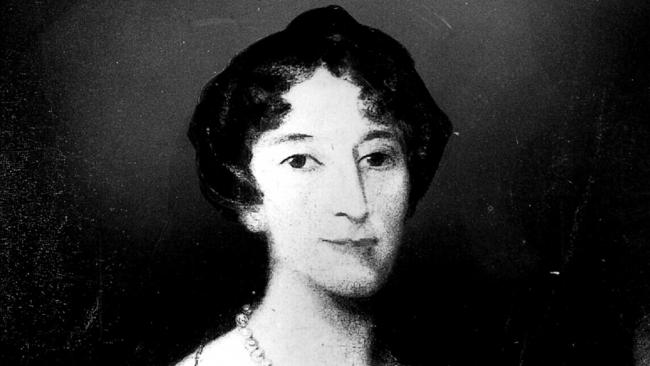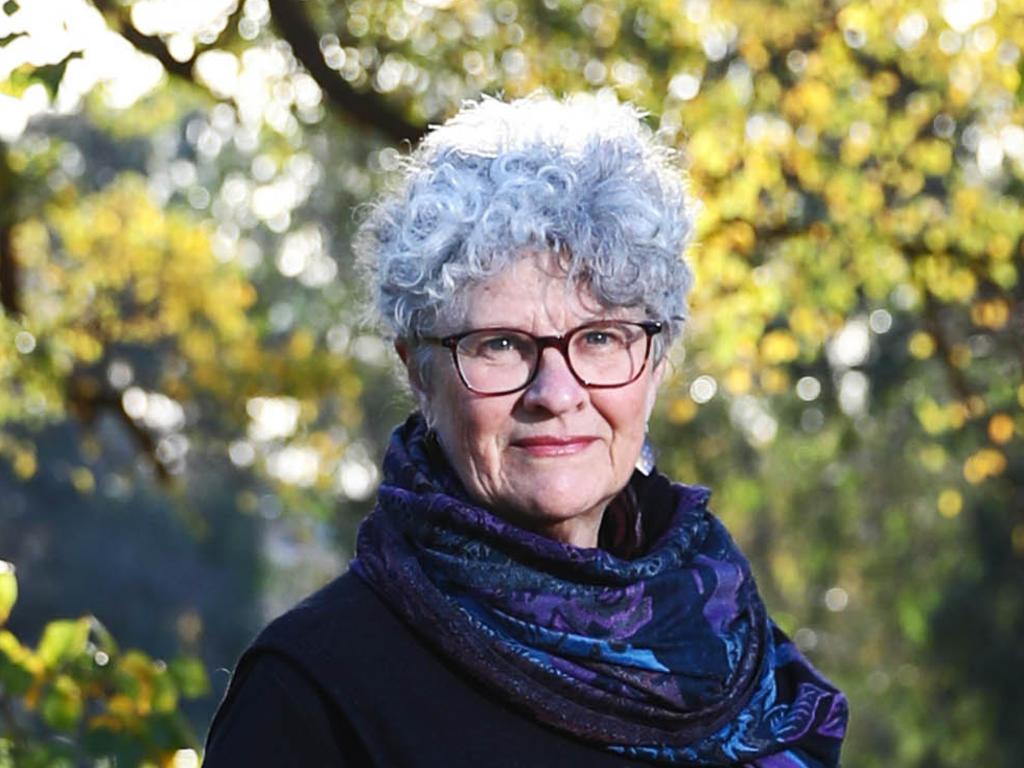A Room Made of Leaves, a vivid portrait of Elizabeth Macarthur
Kate Grenville pierces the bubble of impeccability that surrounds the historical figure of Elizabeth Macarthur.

It is almost wicked, the pleasure Kate Grenville takes in piercing the bubble of impeccability that surrounds the historical figure of Elizabeth Macarthur.
It has been a decade since Grenville’s last novel, The Lieutenant — the second in a diptych of colonial-era fictions which earned the wrath of some historians for daring to imagine a world outside the heavily fortified garrison of fact — and Grenville has evidently spent the interim pondering her response.
She has chosen to double down, and to relish doing so. The decision marks a renewed insistence, to paraphrase Henry James, that we ‘‘must grant the artist her subject, her idea, her donnée: our criticism is applied only to what she makes of it”.
And what she has made of it is something vividly rendered, warmly sympathetic, daring in speculative breadth: a full-length portrait in oils of a woman known to most of us only in profile miniature.
As the editor’s introduction to A Room Made of Leaves explains, this book consists of recently rediscovered notes toward a memoir, penned by the woman whose husband, John Macarthur, that driven and ambitious giant of the early colony — scourge of governors and founder of Australia’s wool industry — has traditionally eclipsed her in stature and significance.
But Grenville’s author’s afterword admits the sham: ‘‘No, there was no box of secrets found in the roof of Elizabeth Farm. I didn’t transcribe and edit what you’ve just read. I wrote it.”
It is fiction as Fake News, in other words. But rather than weaponising rumour and innuendo for divisive or defamatory ends, as is so often the case in the digital present, what Grenville has done is use imagination to lie her way to the truth.
No, her story admits, we cannot know who the real Elizabeth Macarthur was. What we can say with certainty is that she was more than she has been allowed to be. We can’t only rely on facts, this approach implies. Not when history is written by the victors and those victors happen to be men.
If Grenville’s novel is inspired by provocation, it unfolds as a feeling, organic story — one that makes external chronology subordinate to the alternate timeline of inner life, with its gradual coalescence of personality, interrupted by sudden tremors and rents. And although it largely defers to the scant biographical record left to us — a portion of Second Fleet voyage description, a clutch of elegantly composed if politely phatic letters, a few glancing second-hand accounts — it treats them as modesty screens to hide behind rather than doorways to walk through.
Her Elizabeth Macarthur, just like the real woman, was born and raised in rural Devon.
At 22 she married John Macarthur, then a young ensign on the make, and soon accompanied him to the colony of New South Wales.
There, as an educated woman of station, she occupied a privileged place in early colonial society, even establishing a salon of sorts in a settlement threatened by starvation and potential failure.
Official and invented accounts diverge when we step behind Elizabeth’s eyes. Through them, we encounter a young woman whose circumstances — comparative poverty without the requisite beauty to overcome it — mean her choices for marital partner are limited.
John Macarthur, the touchily proud son of a Plymouth draper, not handsome but with a quick, cruel wit and a head full of plans, is not her ideal choice. But since the young Elizabeth has, in a moment of curiosity and weakness, slept with the man (and with the inevitable result), the Regency equivalent of a shotgun wedding is arranged.
Two lonely, intelligent, capable people, operating at the outer edges of a fixed caste system: the pair should have been brought closer by their situation. Instead, Elizabeth tells us, John walls himself up inside an approximation of gentlemanly hauteur:
Oh, he was courteous, never shouted and certainly never struck me. In that I knew I should count my blessings. He listened when I addressed him, but without interest, as if were some stranger he did not need to get to know.
‘‘Would have I preferred the raised voice, the raised hand,’’ she asks herself?’
Of course not. But I had not known that a person could be so lonely, sharing a few square yards of space with another soul.
So, the young couple who arrive at the settlement of Port Jackson in 1790, there to make a new life in a new land, come wrapped in their respective solitudes. Elizabeth’s voice, plangent, bitter, watchful, plausibly captures the tone of a woman without agency or companionship, who has been wrenched out of the one world she knows.
The tragedy of this situation is that she does so while tied to a man constitutionally unstable, spiky, self-defeating in the swiftness with which he takes umbrage at the merest slights. Its triumph is that Elizabeth slowly learns how to salve his amour-propre and direct his scattershot aspirations.
A Room Made of Leaves is the account of a partnership formed and shaped with only one of its associates being aware of the assistance granted.
The nub of the novel is not that Elizabeth turns out to be the woman behind the man. That kind of success — financial, social, political — is gratifying in its way but mainly occurs off-stage, in the masculine realm of Sydney Town and London.
What Elizabeth achieves is something more important, unfurling only in domestic privacy: some portion of control over her destiny; some space cleared, into which a self might relax and breathe, uncorseted.
Grenville takes real pleasure in Elizabeth’s drawing-room machinations. Behind the bland, blameless domestic front, a complex set of calculations are made and remade; seeds quietly planted; barriers dismantled brick-by-brick.
The litigious husband is encouraged back to London for years at a time. Flocks of merinos at Elizabeth Farm are improved to a perfection under her care. Her sons and daughters are permitted that portion of a loving childhood which was withheld from her. Sometimes the liberties that Grenville takes are credible in the light of the biographical record. Who else but Elizabeth could have directed those agricultural miracles when her husband was 12,000 miles away?
Others — particularly in respect to Mrs Macarthur’s relations with staple characters of the early colony such as William Dawes and Watkin Tench — are bold inventions that scramble our assumptions with gleeful verve, granting a dangerous, clandestine edge to her situation.
For all Elizabeth’s successes, won in spite of gender or station, there is a dark backing to her decades at Elizabeth Farm. Every expansion of their landholdings means a concomitant loss for the local indigenous peoples. The slow, blooming sense of home she nurtures in that place means others’ eviction from theirs.
As for John Macarthur, whose empathy for the first peoples of the region is negligible, he commits acts which render Elizabeth complicit with the beginnings of a displacement so large and so violent that the stain can never be fully expunged.
Grenville knows that this is an unsolvable moral equation, and to her credit she nudges Elizabeth to acknowledge as much. For all its vigour and ambition, its elegantly inventive conjectures regarding one woman’s secret history, A Room Made of Leaves ends on an appropriately minor note, one that ties Elizabeth’s own “recovered” history to those vanished from her beloved Parramatta, “the place of eels”.
“Now, after so many years,” writes the elderly Elizabeth, “I know better than ever what has been done to the Gadigal, the Wangal, the Cameraygal, Burramattagal and all the others”:
Not just the turning-off from their lands and the damage to their old ways. Not just the cruelties inflicted. Not just the deaths. Behind all that is another, fundamental violence: the replacement of the true history by a false one.
Geordie Williamson is chief literary critic of The Australian.






To join the conversation, please log in. Don't have an account? Register
Join the conversation, you are commenting as Logout